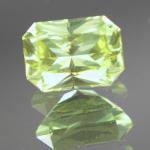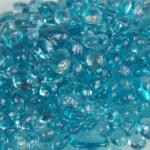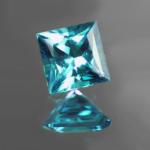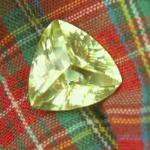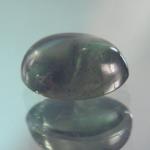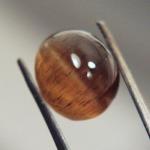
Classes- Alabama
- Alaska
- Arizona
- Arkansas
- California
- Colorado
- Connecticut
- Delaware
- Florida
- Georgia
- Hawaii
- Idaho
- Illinois
- Indiana
- Iowa
- Kansas
- Kentucky
- Louisiana
- Maine
- Maryland
- Massachusetts
- Michigan
- Minnesota
- Mississippi
- Missouri
- Montana
- Nebraska
- Nevada
- New Hampshire
- New Jersey
- New Mexico
- New York
- North Carolina
- North Dakota
- Ohio
- Oklahoma
- Oregon
- Pennsylvania
- Rhode Island
- Tennessee
- Texas
- Utah
- Vermont
- Virginia
- Washington
- West Virginia
- Wisconsin
- Wyoming
| Hardness : 5 Specific Gravity : 3.2 Refractive index : 1.63- 1.64 Doubly Refracting (bi-refraction) : 0.003 Chemistry: Ca5(PO4)3(OH,F,Cl), Calcium (Fluoro, Chloro, Hydroxyl) Phosphate Class: Phosphates Group: Apatite Uses: as a source of phosphorous to be used in fertilizer, rarely as a gemstone and as a mineral specimen. Specimens Apatite is actually three different minerals depending on the predominance of either fluorine, chlorine or the hydroxyl group. These ions can freely substitute in the crystal lattice and all three are usually present in every specimen although some specimens have been close to 100% in one or the other. The rather non-inventive names of these minerals are Fluorapatite, Chlorapatite and Hydroxylapatite. The three are usually considered together due to the difficulty in distinguishing them in hand samples using ordinary methods. An irony of the name apatite is that apatite is the mineral that makes up the teeth in all vertebrate animals as well as their bones. Get it? Apatite - teeth! Anyway, the name apatite comes from a Greek word meaning to decieve in allusion to its similarity to other more valuable minerals such as olivine, peridot and beryl. Apatite is widely distributed in all rock types; igneous, sedimentary and metamorphic, but is usually just small disseminated grains or cryptocrystalline fragments. Large well formed crystals though can be found in certain contact metamorphic rocks. Very gemmy crystals of apatite can be cut as gems but the softness of apatite prevents wide distribution or acceptance of apatite as a gemstone. PHYSICAL CHARACTERISTICS: Color is typically green but also yellow, blue, reddish brown and purple. Luster is vitreous to greasy and gumdrop. Transparency: Crystals are transparent to translucent. Crystal System is hexagonal; 6/m Crystal Habits include the typical hexagonal prism with the hexagonal pyramid or a pinacoid or both as a termination. Also accicular, granular, reniform and massive. A cryptocrystalline variety is called collophane and can make up a rock type called phosphorite and also can replace fossil fragments. Cleavage is indistinct in one basal direction. Fracture is conchoidal. Hardness is 5. Specific Gravity is approximately 3.1 - 3.2 (average for translucent minerals) Streak is white. Associated Minerals are hornblende, micas, nepheline and calcite. Other Characteristics: An unusual "partially dissolved" look similar to the look of previously sucked on hard candy. Notable Occurrences include Durango, Mexico; Bancroft, Ontario; Germany and Russia. Best Field Indicators are crystal habit, color, hardness and look. |
- Birth Stone Gems
- Wedding & Anniversary Gems
- How To Guides
- Fireable Gems
- Nonprofits and Guilds
- Gem Show
- Gem Stone Information
- ·Abalone
- ·Achroite (Tourmaline)
- ·Agate ( Chalcedony)
- ·Alexandrite
- ·Almandine ( Garnet )
- ·Amber
- ·Amethyst ( Quartz)
- ·Ammolite
- ·Andalusite
- ·Andradite Garnet
- ·Apatite
- ·Aquamarine ( Beryl )
- ·Aventurine ( Quartz )
- ·Azurite
- ·Benitoite
- ·Bloodstone ( Chalcedony )
- ·Brown Quartz ( Smokey Quartz )
- ·Calcite
- ·Carnelian ( Chalcedony )
- ·Cassiterite
- ·Celestine
- ·Cerussite
- ·Chalcedony
- ·Chatoyant Quartz
- ·Chrysoberyl
- ·Chrysocolla
- ·Chrysoprase (Chalcedony)
- ·Citrine ( Quartz )
- ·Coral
- ·Danburite
- ·Diamond
- ·Diopside
- ·Dioptase
- ·Dravite ( Tourmaline)
- ·Emerald ( Beryl )
- ·Enstatite
- ·Epidote
- ·Euclase
- ·Fire Agate (Chalcedony)
- ·Fluorite
- ·Gold
- ·Goshenite (Beryl)
- ·Grossular Garnet (Tsavorite Garnet)
- ·Gypsum
- ·Heliodor ( Beryl )
- ·Hematite
- ·Hessonite (Grossular Garnet)
- ·Imperial Topaz
- ·Indicolite ( Tourmaline)
- ·Iolite
- ·Ivory
- ·Jadeite
- ·Jasper (Chalcedony)
- ·Jet
- ·Kornerupine
- ·Kunzite
- ·Kyanite
- ·Labradorite
- ·Lapis Lazuli ( Lazurite)
- ·Lazulite
- ·Malachite
- ·Meerschaum
- ·Microcline
- ·Milky Quartz
- ·Moonstone
- ·Morganite ( Beryl)
- ·Nephrite ( Jade)
- ·Obsidian
- ·Oligoclase
- ·Onyx
- ·Opal
- ·Orthoclase
- ·Padparasha ( Corundum)
- ·Pearl
- ·Peridot
- ·Pink Topaz ( Mercury Myst Vapor )
- ·Plasma ( Chalcedony)
- ·Prase ( Chalcedony )
- ·Prehnite
- ·Pyrite
- ·Pyrope ( Garnet )
- ·Rock Crystal ( Quartz )
- ·Rubellite ( Tourmaline)
- ·Ruby ( Corundum)
- ·Sapphire ( Corundum)
- ·Sardonyx ( Chalcedony)
- ·Scapolite
- ·Schorl (Tourmaline)
- ·Shell
- ·Spessarite (Garnet)
- ·Sphalerite
- ·Spinel
- ·Spodumene (Hiddenite - Triphane)
- ·Tanzanite (Zoisite)
- ·Tektites ( Moldavite )
- ·Tiger Eye
- ·Titanite (Sphene)
- ·Topaz
- ·Turquoise
- ·YAG (Garnet)
- ·Zircon
